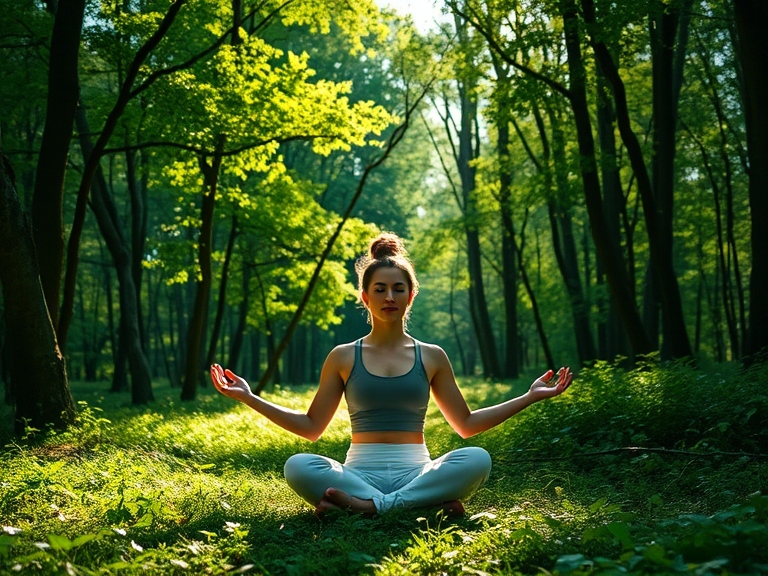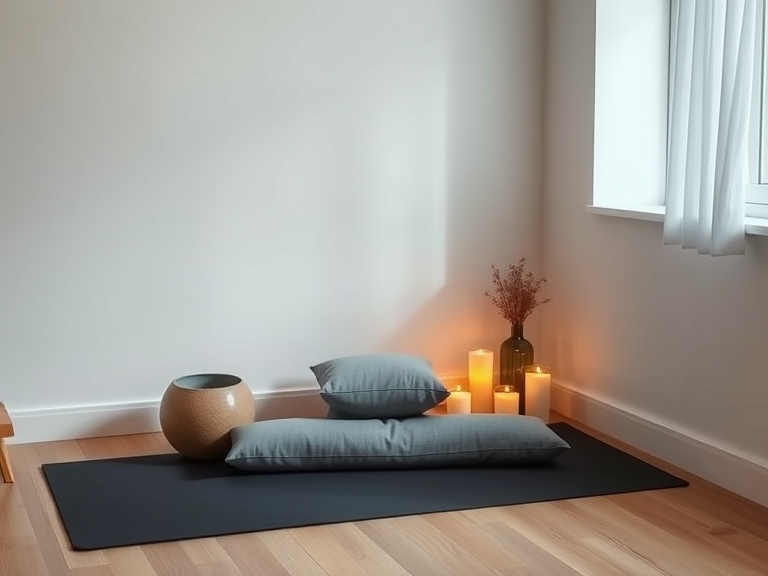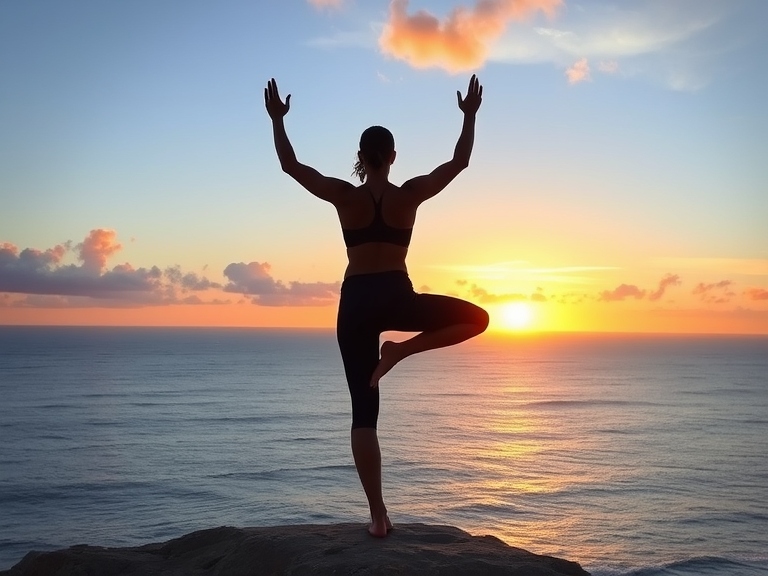Meditative Yoga: Unlocked Inner Peace through Mindful Movement
In today’s modern society, it has almost become impossible to find some quiet time, understanding of the self, or calmness of mind. Constantly being rushed into a fit, stress and anxiety keep man away from introspection. On the other hand, there is one form that leads one towards inner serenity: meditative yoga. Since it encompasses yoga for a well-toned body and meditation for a fresh, clear, or focused mind, meditative yoga helps to establish both physical as well as mental wholeness.
This article discusses the nature of meditative yoga, its benefits, techniques, and how to incorporate it into your daily life for lasting peace and wellness.
What is Meditative Yoga?
Meditatively yoga is the combination of yogasanas and mind and meditation practices. Here, the type of flexibility that calls for strength as applied by the traditional yoga practice is replaced by the focused or mindful state of an individual in which the asanas are performed. It means the postures are deepened together with intentional slowness and constant movement of awareness within the body, therefore having a meditation experience through all the states.
It is a journey rather than the destination. Not a perfect pose, but the ability to be completely present in each moment. An ideal practice for anyone who would like to improve their mental acuity, alleviate stress, and connect with himself or herself in a deeper way.

The Core Principles of Meditative Yoga
Meditative yoga bases itself on a few very fundamental principles that differentiate it from other yogas:
- Mindfulness: Being aware of the present. Pay attention to your breath, body, and environment neutrally.
- Breath Awareness: Deeper, conscious breathing (pranayama) anchors the mind. Breath is that portal between physiological and psychological states.
- Gentle Movements: Use slow, controlled postures to aid relaxation. Don’t force yourself into hard, fast sequences in hopes of attaining a meditative state.
- Inner Observation: Draw your focus away from the external world, notice your thoughts and emotions, Welcome whatever happens without trying to alter or suppress it.
Advantages of Meditative Yoga
- Reduces Stress and Anxiety
Meditative yoga activates the parasympathetic nervous system, which is in charge of the relaxation response in a body. It soothes the mind and body in such a manner that cortisol-the stress hormone-may be decreased and symptoms linked with anxiety reduced. - Emotional Health
Pranayama or meditative yoga develops self-awareness and emotional balance. It teaches you to handle negative emotions and look at life positively with time. - Improves Concentration and Focus
Mindfulness and breath control in meditative yoga train your mind to stay focused, reduce mental clutter, and improve cognitive function. - Improves Physical Health
Although mild, meditative yoga still benefits the body in some aspects, such as better flexibility, posture, and increased circulation. It also helps in keeping the joints healthy and calms the muscles. - Spiritual Orientation
For those who want their spiritual route, meditative yoga offers a path to becoming more connected with the self and the universe. That’s an emotional conductivity into feelings of oneness, purposefulness, and inner peace.

Methods in Meditative Yoga
- Gentle Stretching Poses and Body Scan Meditation
Lie on the mat and rest in Savasana, otherwise known as Corpse Pose. Take time to pass through your body from head to toe and let go of tension with every pass. Support this by gently stretching the entire body using poses like Cat-Cow. - Mindful Seated Breathing
Sit comfortably in Sukhasana or Easy Pose. Close your eyes and bring your attention inward. Breathe in fully through the nostrils and then slowly exhale. Coordinate movement with breathing-in stretches to the sides, neck flexions, etc. - Movement Meditation
To do so, execute fundamental movements as seen in fluid movements of some forms of reduced variations of Sun Salutation. That is slow deliberation with any kind of sensation within the physical body. Combining movement with the body, this is what that includes in the practice of mindful activity. - Quiet sitting practice
Close your session by doing a quiet meditation. Sit comfortably, close your eyes, and calm down your mind. For more effective meditation, focus on your breath or repeat a mantra.

How to Make Meditative Yoga Part of Your Life
- Prepare a Sacred Space
Create a quiet, cozy space in your home to practice meditative yoga. You may add cushions, a yoga mat, candles, and soft music to the room. - Routine
Do it at the same time each day so that you can set a routine. Early morning or evening is great for getting quiet and uninterrupted time. - Start Slow
Start with short sessions of 10 to 15 minutes and then increase from there once you become accustomed to the practice. - Assisted Resources
You can download guided meditating yoga sessions with apps like Calm, or Insight Timer and even find similar videos on You Tube. - Pair Up with Other Exercises
You could combine meditative yoga with some journaling or aromatherapy or even mind walks to increase your effect.

The Connection Between Meditative Yoga And Spirituality
Yoga has always been a part of spiritual practice. Meditative yoga is a way of life in keeping with the ancient yogic traditions that speak about the unity of the mind, body, and spirit.
Key Spiritual Benefits:
Self-Realization: Meditative yoga will bring out your true self, unaffected by social pressure or egoistical wishes.
Mind-Body Harmony: It establishes a balance between physical health and mental well-being, which eventually brings a state of inner harmony.
Connecting with the Universe: Repeated practice enables a connection to the universe and extends beyond the limits of the self.
For most practitioners, meditative yoga brings about both improved mental and physical health, along with the added benefit of enhancing their spiritual path, helping them understand deeper aspects of life.
Myths About Meditative Yoga
- “It Is for Advanced Practitioners Only.”
Reality: All people, of every age and fitness level, as well as experience, can practice meditative yoga. It is easy to begin with and is hence excellent for beginners. - “It’s Not Very Physically Demanding.”
Reality: Although meditative yoga is more about the mind-set, it does stretch the muscles and increases flexibility over time. - “You Require Special Equipment.”
Reality: Just a quiet place and a mat is enough. The practice is free and also very flexible. - “It’s Too Time-Consuming.”
Reality: A 10-minute session may be highly effective for your mental and emotional balance.
This is a meditative yoga combination of physical movement and mental stillness that makes the practice nourishing to your whole being. It’s mindfulness, breath awareness, and gentle poses that will allow you to enjoy the benefits of yoga simultaneously create inner peace.
Whether you want to find peace, balance your emotions, or find a sense of spirituality, meditative yoga can be that transformational experience for you. Start small, stay consistent, and let this practice guide you to a healthier, more centered version of yourself.
Begin your meditative yoga journey today. Create a space, set an intention, and experience the profound benefits of mindful movement.

